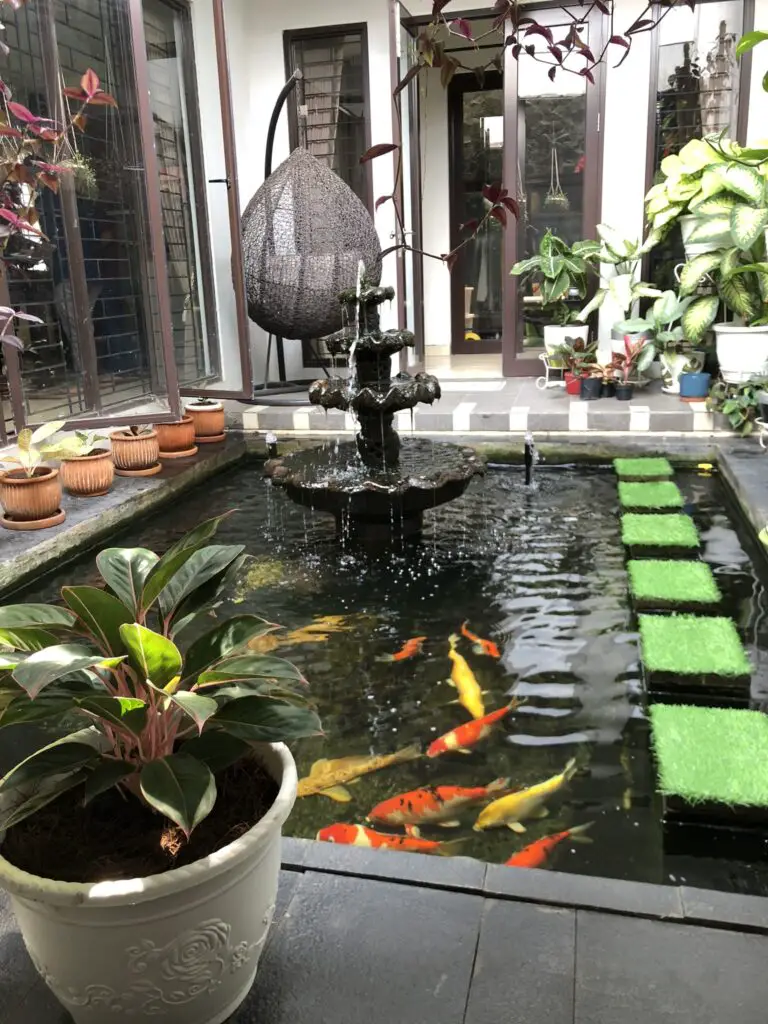
For a long time, UV lights have been used in koi ponds to keep the water clear. Algae floating in the water can grow and spread, making your pond murky and green. UV radiation is a powerful germicide that is extremely efficient at killing single-celled organisms.
UV lights can help keep a koi pond crystal clear by killing microorganisms and algae floating in the water using electromagnetic radiation. Pathogens that can harm koi are killed, and algal blooms are prevented. However, beneficial bacteria, microbes, and diatoms are also killed.
There is some debate as to how good UV light filters are for ponds. Today, there are natural alternatives on the market for keeping pond water clear. Here, we explain the benefits and disadvantages of using UV lights to clean pond water. We also look at newer biological filters that keep beneficial bacteria alive.
Pro Tip: If you’re tired of wasting money and making costly mistakes on the koi-keeping hobby or are thinking about buying koi fish but don’t know where to start, I strongly suggest you check out this ebook. I recently read this ebook, and it contains SO much useful information, such as:
- 3 proven steps to identify koi fish diseases
- WARNING: 3 things you should NEVER do when it comes to caring for koi
- When to seek professional help when it comes to looking after your koi
Is A UV Light Beneficial In A Koi Pond?
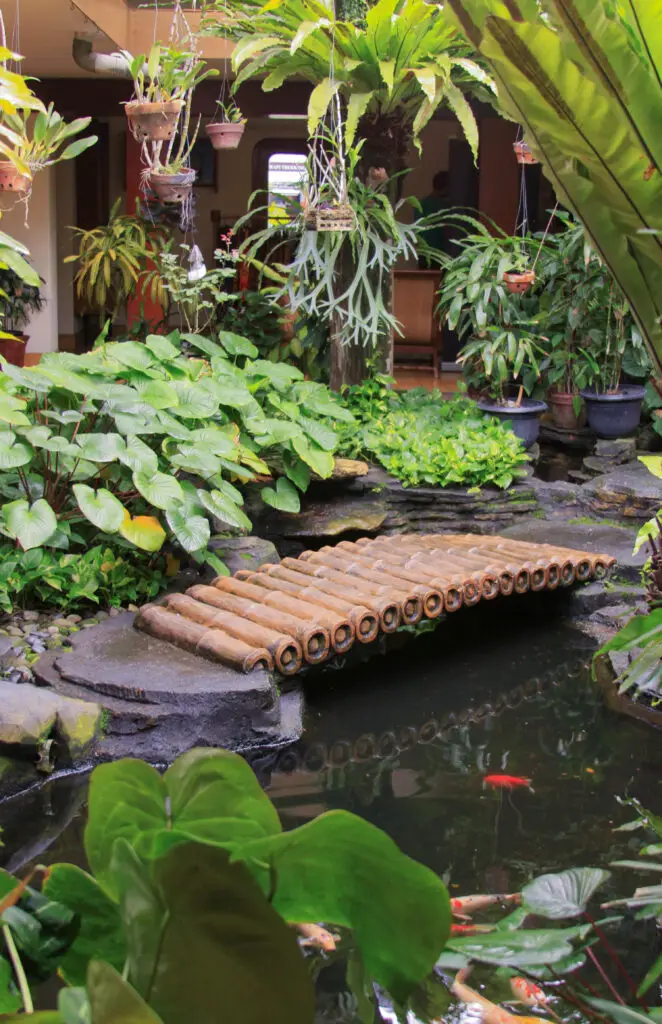
The most common method for maintaining crystal clear water in a pond is to use a UV light. There are some wonderful advantages to using UV lights in a koi pond:
- It makes pond maintenance much less labor-intensive. You do not have to go about scooping floating algae out and cleaning out sludge from the bottom of the pond.
- They keep pond water beautifully clear. When installed and used properly, UV lights are extremely efficient at their intended job.
- Powerful UV lights can kill harmful pathogens in the water. This keeps your fish healthy by protecting them from disease-causing microorganisms.
- It is an alternative to using chemical clarifiers and flocculants, which can be harmful to koi fishes’ long-term health.
How Do UV Lights In A Pond Work?
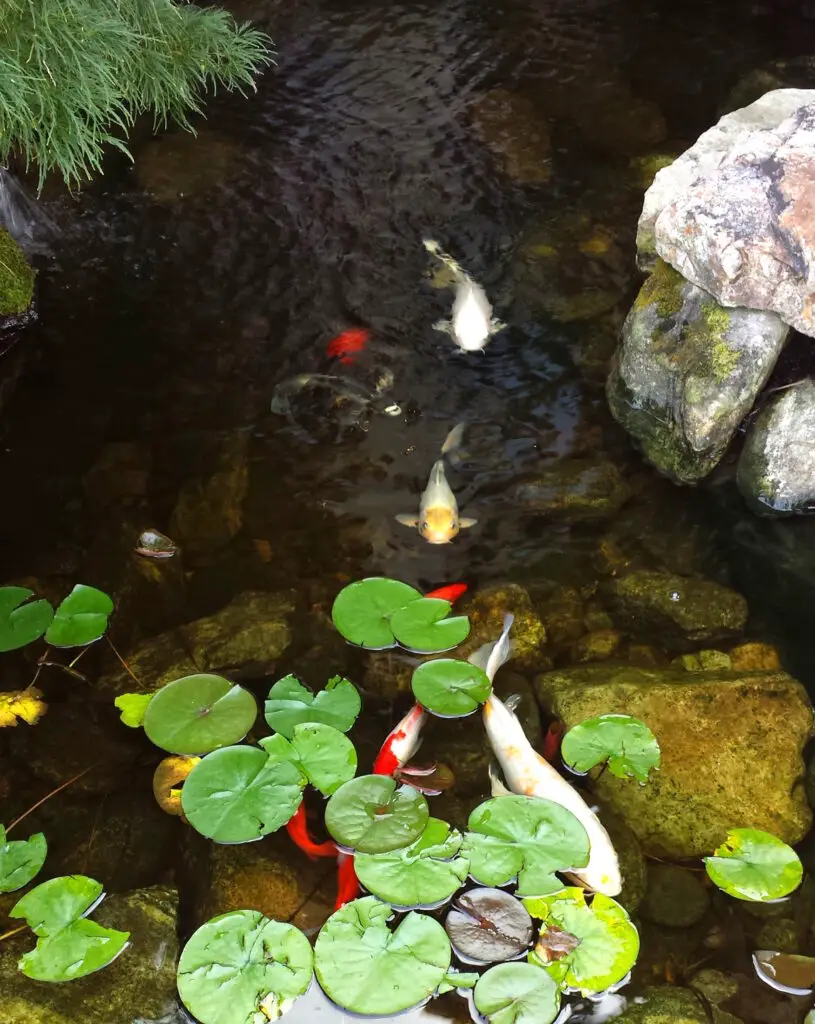
UV pond lights are marketed as UV filters, sterilizers, or clarifiers. These terms can be misleading because the light itself does not actually filter the water. Here’s how they work:
A UV light system for a pond consists of a pipe with water inlet and outlet points and a pump that drives water through the pipe. A UV bulb sits inside the pipe, exposing all the water that moves through the pipe to UV light.
When single-celled organisms, like algae, diatoms, bacteria, and protozoa, are exposed to UV light, their DNA is destroyed by the radiation, and they die. Once dead, they clump together and can then be filtered out of the water mechanically or with a biological filter.
Only organisms that move through the pipe are exposed to UV light, so koi fish, snails, and other aquatic plants are not directly affected by the radiation.
Where Do You Put A UV Light In A Pond?
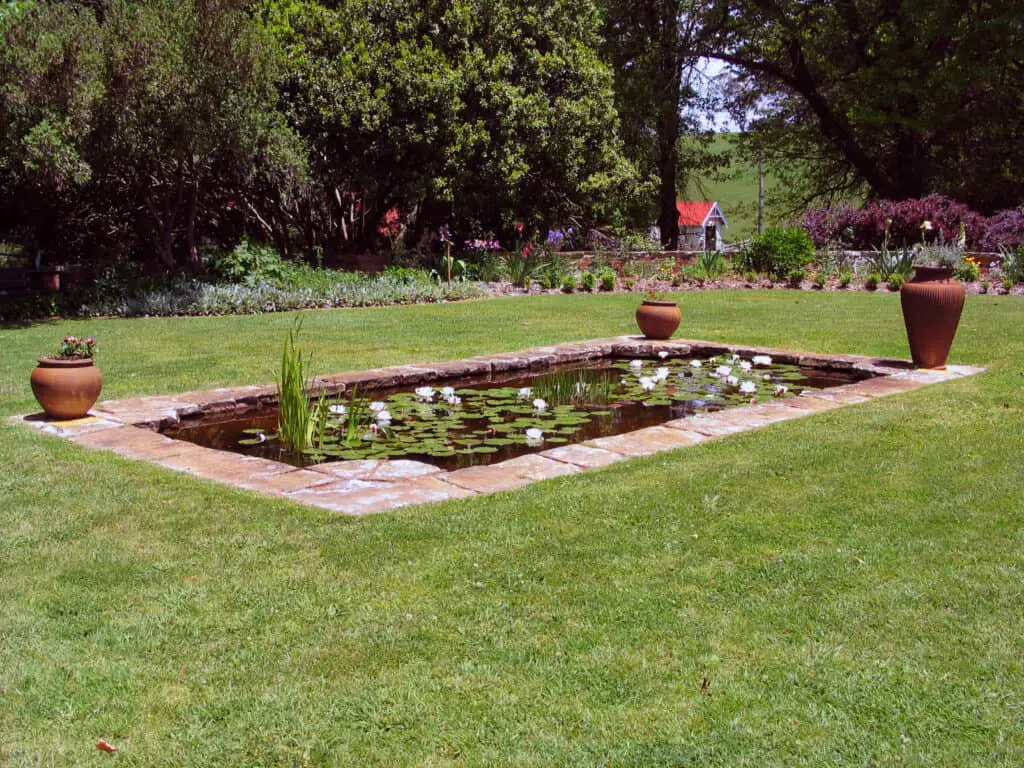
Before installing a UV pond light, it is important to consider the best position in the pond to put it.
Since UV pond lights need electricity to work, you need a flat, dry surface near an outlet to mount it to. The lid of the pond filter is usually a good place to put a UV pond light. Although the pump and bulb are enclosed in waterproof housing, they cannot be submerged in water!
In small ponds (less than 1000 gallons) with a submerged pump, the UV light should be connected to the pump. A mechanical pre-filter should be installed between the pump and the UV light to remove solids from the water before they enter the UV filter.
In medium-sized ponds (1000 to 5000 gallons) with an external pump, the UV light should be installed between a skimmer box and a biological filter. This will remove solid waste from the surface of the water and filter out dead biological matter that exits the UV filter.
For ponds larger than 5000 gallons, the UV light should be installed between a skimmer box and a biological filter. You should put multiple outlets from the UV filter throughout the pond.
Disadvantages Of UV Lights For A Koi Pond
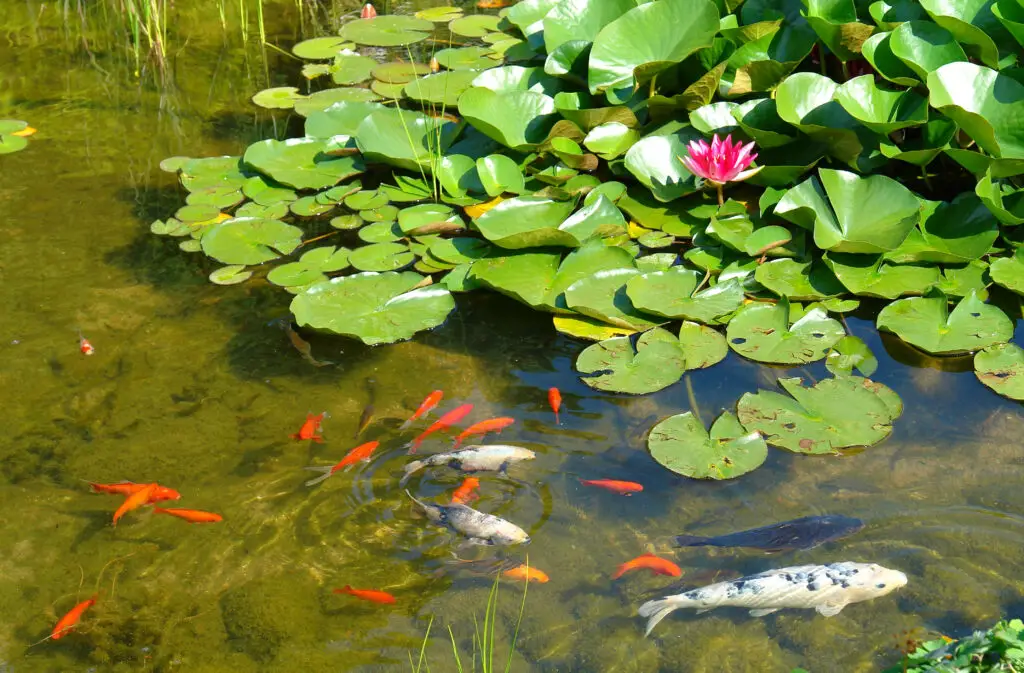
While the concept of a UV pond light is great in theory, there are some significant disadvantages to this method of keeping pond water clear:
- UV light does not kill string algae, like blanketweed. It only works on single-celled algae.
- Both good and bad bacteria and microorganisms are killed. UV lights can disrupt the natural balance in the pond.
- Not all koi pond products and medications can be used if you have a UV light. Some medications break down when exposed to UV light. You must switch your UV light off for a few days while medicating koi!
- The UV bulbs must be changed regularly. You have to replace them every 12 to 14 months.
- During winter, if the water freezes inside the UV clarifier, it can break. It is a good idea to switch the UV light off, empty it, and bring it indoors in places with freezing winters.
- Running a UV light constantly adds to monthly electricity bills. Depending on the price of electricity in your area, it can get very expensive!
Choose The Right UV Light For Your Pond
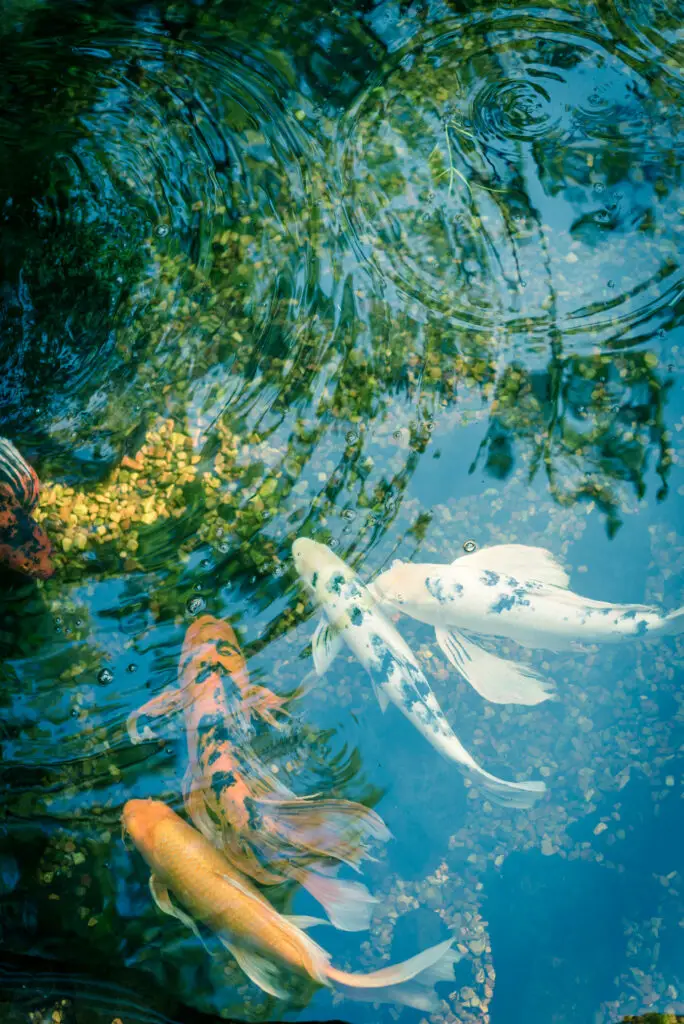
If water moves past the UV light too quickly, not all the microorganisms in the water will be killed. Water must flow through the UV filter slowly enough to expose all the bacteria and algae to the UV light for long enough.
Therefore, it is important to buy a UV pond light that is powerful enough for the size of your pond. If the light is too weak, you will not notice a difference. If the pump is too powerful, it will also render the light ineffective.
If the speed of water flow in your koi pond is too high, you will need to install another piece of equipment to slow it down before it enters the UV filter.
Read the instructions for your particular UV filter to see what the recommended flow rate is. The recommended flow rate also depends on the size of your pond. A 600-Gallon pond needs a 5 W UV pond filter system, whereas a 6500-Gallon pond requires a 57 W system.
How Much Does A UV Pond Light Cost?
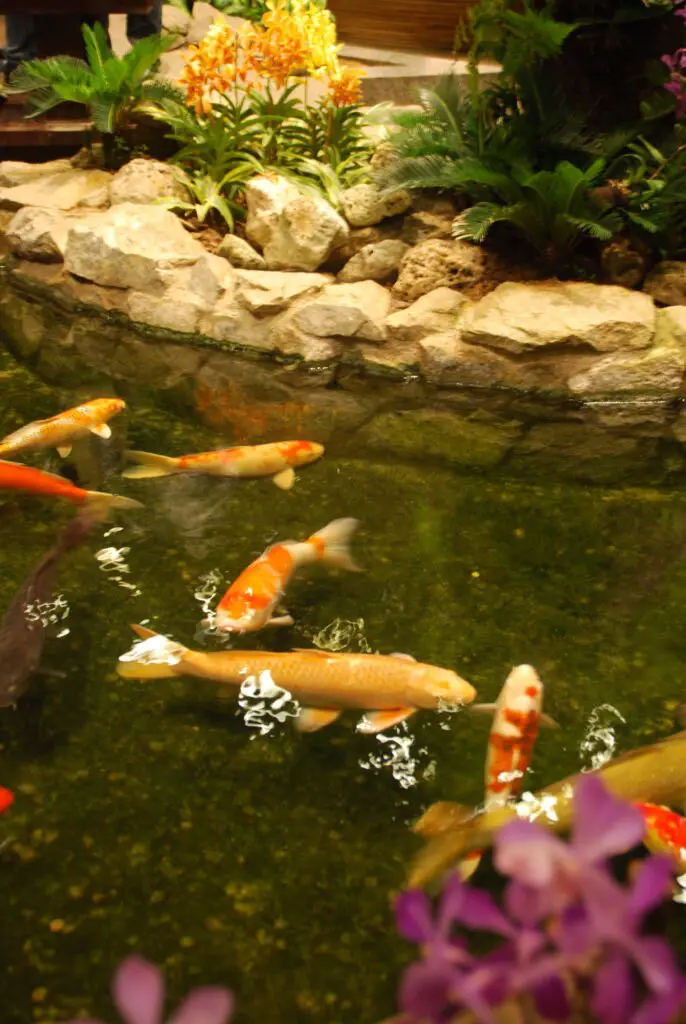
Depending on the type of UV pond light you need, you can pay anywhere from $150 to over $500. This is just the initial cost of buying the system.
You have to change the UV bulbs at least annually. A new UV bulb costs between $30 and $50. Another ongoing cost is electricity to run the system. Running a UV light filtration system can cost around $100 per month, depending on how much electricity costs where you live.
How To Change A UV Bulb For A Pond Light
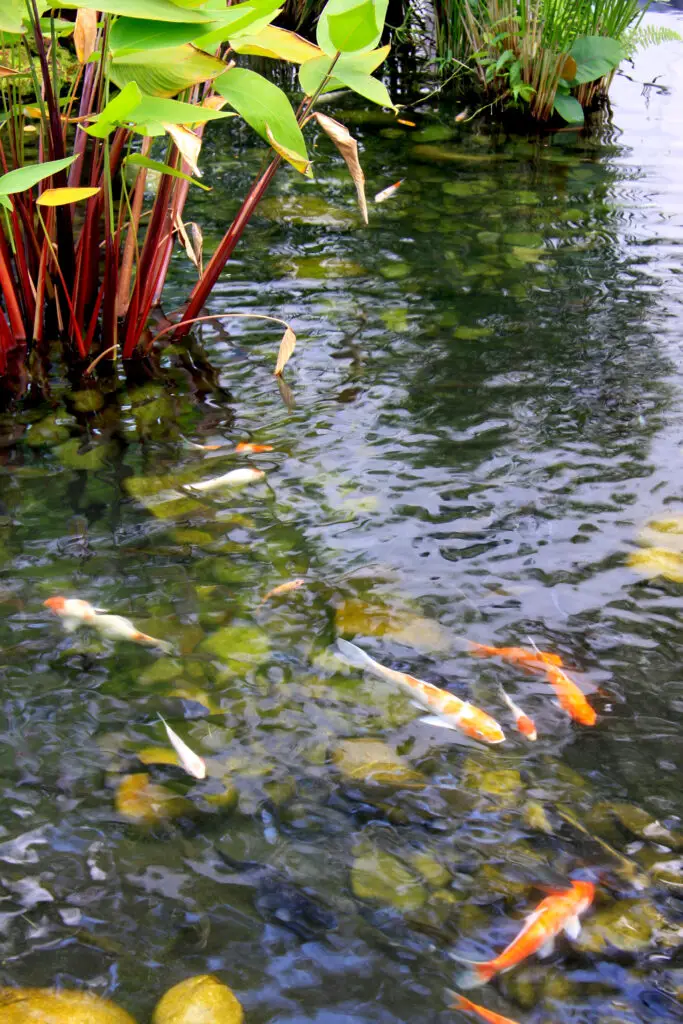
UV lightbulbs are made from extremely fragile glass. One has to be super careful when installing a UV pond light and changing the bulbs!
It is best to avoid touching the bulb with your fingers. Oils and residue from our skin can significantly decrease the bulb’s lifespan. Wear latex gloves while changing the bulbs.
You should change the bulb in a UV pond light at least every 12 to 14 months. However, if you do not permanently use the UV light, you can get away with replacing the bulb less frequently.
Disassembling a UV filtration unit is generally very straightforward: simply unscrew the part with the bulbs attached and carefully slide the lightbulbs out of the tube. Unscrew the old lightbulbs and screw in the new ones – that’s it!
While you have the UV filtration system taken apart, check the interior part of the pipe for dirt or calcium buildup. Clean it using a soft cloth or brush if necessary.
UV Pond Lights Do Not Promote A Natural Balanced System
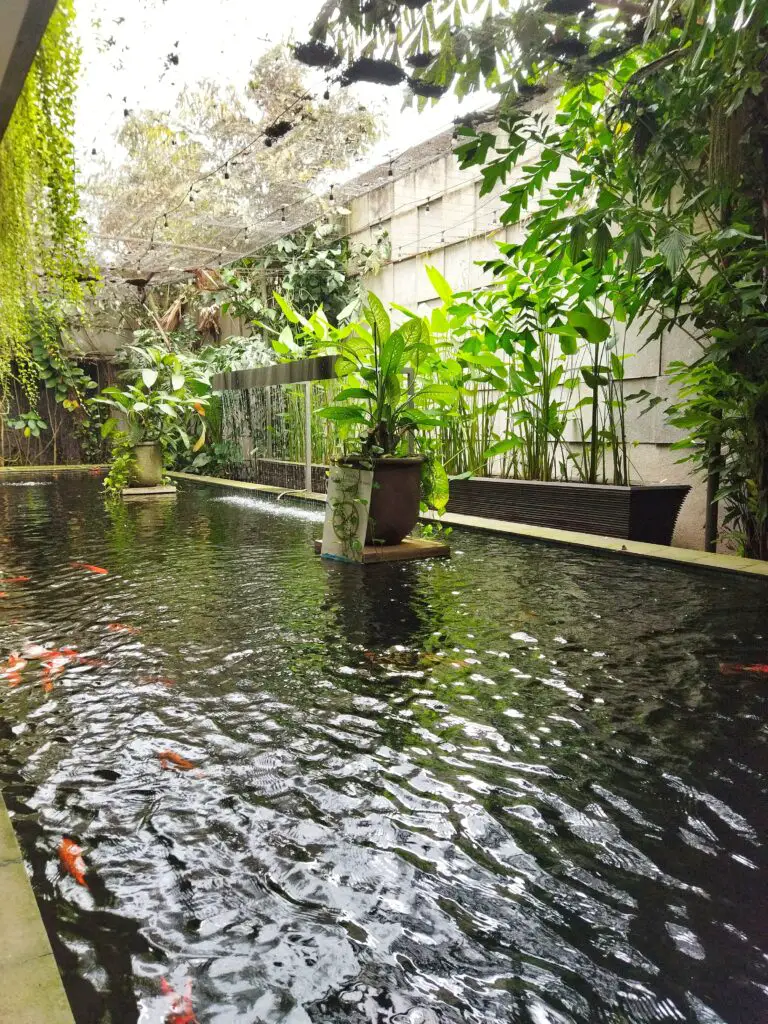
One of the biggest concerns around the use of UV light to stop algae from growing in a pond is that UV radiation kills all microorganisms in the water, both harmful and beneficial.
Algae in pond water takes up free nutrients in the water, like nitrogen and phosphorus. By killing all free-floating algae in a pond, you can disrupt the natural balance of the pond ecosystem.
A healthy natural system should contain algae, diatoms, and beneficial bacteria. The different microorganisms all serve certain functions and maintain a healthy balance in the system.
Think of the food chain in a koi pond: excess nutrients in the water are consumed by diatoms and phytoplankton (single-celled algae). These microorganisms are then eaten by zooplankton, and fish feed on zooplankton.
Diatoms also function to produce oxygen in the water. They function to keep the water clear and boost a pond’s overall health.
Alternatives To UV Pond Lights
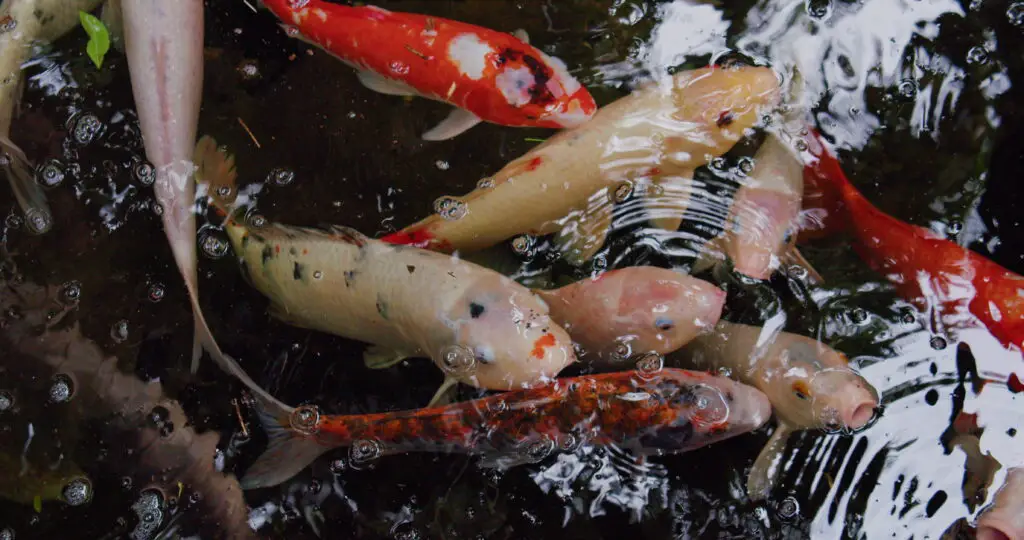
It is not necessary to install a UV light in your koi pond. There are many ways to keep the pond water from turning murky and green!
- Ionic water clarifiers like the Aquascape IonGen system.
- Biological filters.
- Pond skimmers.
- Natural pond treatments.
- Add lots of aquatic plants to a pond.
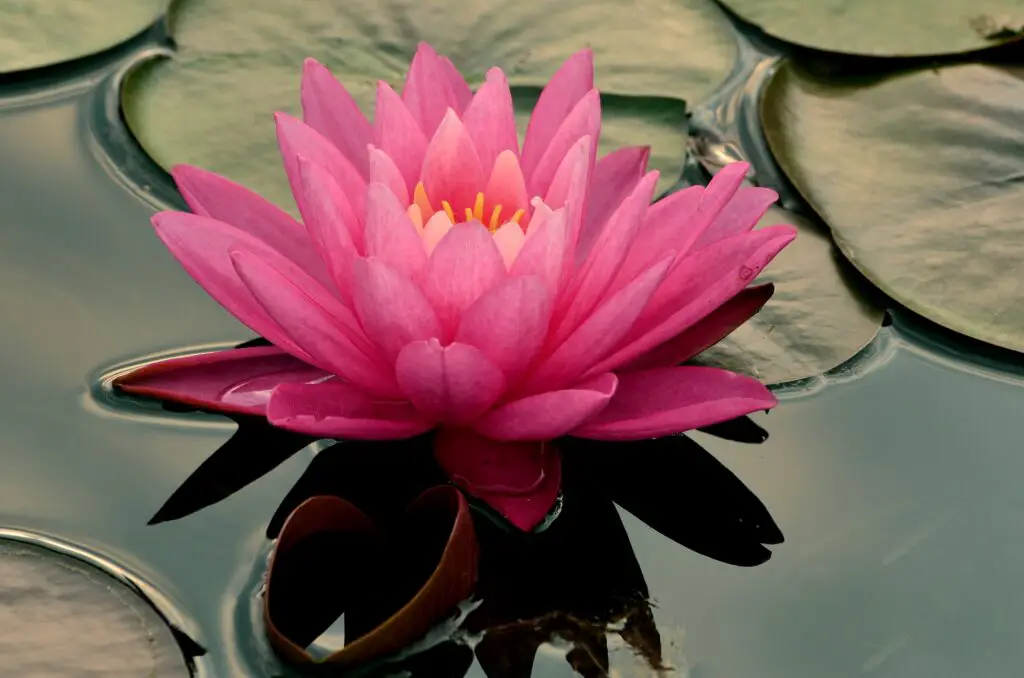
Ionic water clarifiers provide a new way to keep pond water clear. They are electronic devices that you install inside a pond skimmer or near a stream or waterfall (somewhere water is moving). These devices release metal ions into the pond water to control algae populations.
The Aquascape IonGen 2 is an excellent option for a natural water clarifier. It is small, so it can easily be hidden around the pond, and it kills algae effectively using silver and copper ions. These devices can make pond maintenance much easier and cheaper.
Biological filters, AKA biofalls, are another great method of keeping pond water clear and algae-free. These filters contain lots of tiny balls covered in beneficial bacteria. As water moves through the biofall, the bacteria break down organic matter and ammonia.
Pond skimmers are excellent mechanical filters. They are installed at the edge of a pond, at the water’s surface, and catch debris floating on the water. The debris collects in a net basket, which you need to empty out regularly.
A totally natural way to enhance a pond’s clarity is to add barley straw to the water. Adding more organic debris sounds counter-intuitive, but barley straw works reliably to control algae.
You need a bale of straw to treat a 1000-Gallon pond, but you can make smaller parcels of straw for smaller ponds. You simply have to stuff a bundle of straw into a net bag or stocking and place the parcel in the pond near moving water.
As the straw decomposes, it produces a chemical similar to hydrogen peroxide. This clarifies the water.
Natural pond treatments for controlling algae are available. Some use the chemical isolated from barley straw as the active ingredient. Other products promote the growth of diatoms in the pond water.
How To Keep Koi Pond Water Clear
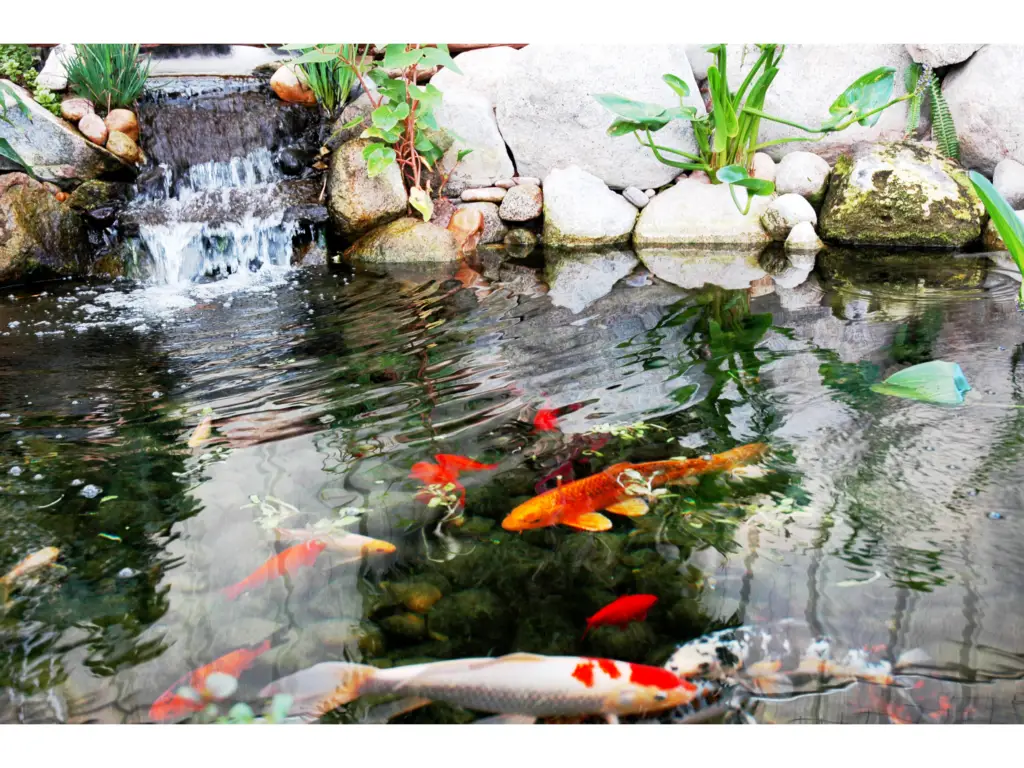
UV light filters are not designed to be the primary form of filtration in a pond. A UV light should only be used to enhance the existing filtration system in your pond.
These are some tips for keeping your koi pond crystal clear:
- Keep the water surface free of floating debris – leaves, sticks, string algae. You can do this with a net or install a pond skimmer to make your job easier.
- Ensure that your pond has a strong enough pump and filters for its size.
- Maintain your biological and mechanical filters regularly. Keep them clean so that they work as effectively as possible to remove organic matter and ammonia from the water.
- Grow lots of aquatic plants. They will take up excess nutrients in the water that would otherwise cause algae to proliferate.
Conclusion
UV Pond lights have been the most popular way to keep koi pond water clean for decades, but this method is not necessarily the best for your pond. Along with harmful bacteria and algae, UV light kills beneficial bacteria and microorganisms. This can lead to a biological imbalance in the pond and a long-term decline in overall water quality.
It is not 100% necessary to install a UV pond light. There are plenty of alternative ways to keep pond water clean and clear – biological filters, skimmers, and natural pond water clarifiers.
Resources
https://nualgiponds.com/pond-uv-filter-sterilizer-pros-cons/
https://premierpond.com/pond-uv-lights/
https://webbsonline.com/Article/How-To-Replace-UV-light-Tetra-External-UV-Clarifier

